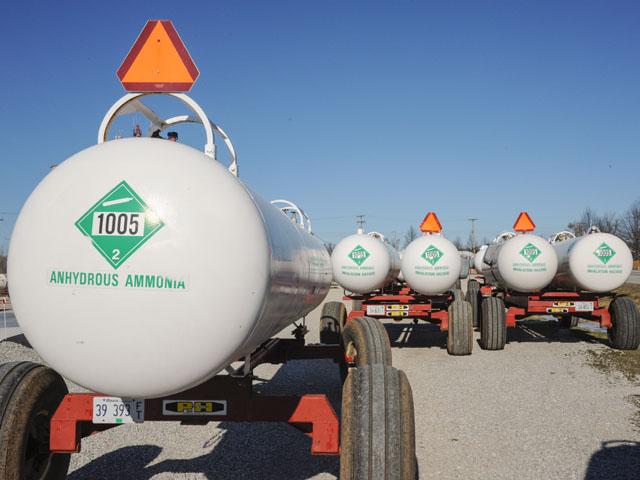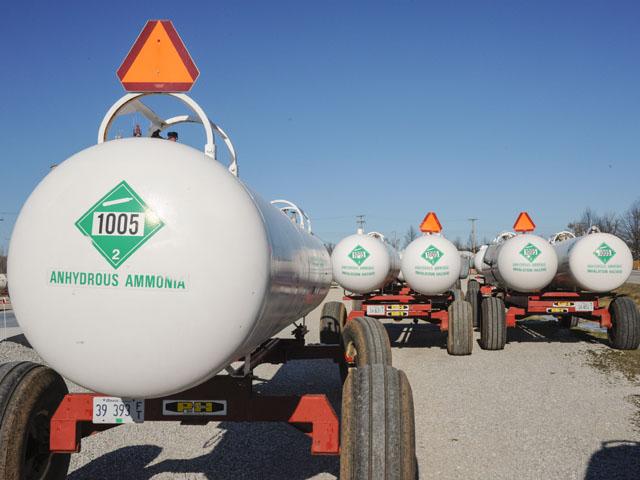Production Blog
Six Spring Anhydrous Safety Reminders
This spring is already setting up to be one of those where farmers feel pushed to meet fertilizing, spraying and planting deadlines. Add distracted roadway drivers, buzzing phones and other hazards to the chaos.
But here's an important safety tip -- a few minutes to refresh ways to work around anhydrous ammonia are never wasted. The product deserves mega respect.
Illinois Fertilizer and Chemical Association President KJ Johnson said understanding the chemical and physical properties of anhydrous ammonia is the best way he knows to hammer home the need for safe handling.
One cubic foot of liquid anhydrous ammonia, contained under pressure, produces 850 cubic feet of vapor when released, an expansion rate of 850 to 1. "When farmers hear that, they suddenly begin to understand why it is so important to check for nicks in hoses, shut-off valves during transport, and hold transport driving speed under 25 miles per hour (mph).
"If we could just do those three things, we could cut incidents dramatically," he said.
P[L1] D[0x0] M[300x250] OOP[F] ADUNIT[] T[]
Here are six seasonal reminders from IFCA:
-- Slow down! Nurse tanks should not travel down the road at more than 25 mph.
-- ALWAYS turn the nurse tank valves off at the tank source and disconnect hoses before pulling onto a public roadway. This is required by law. You should never have a "charged" system when sharing the road with other motorists.
-- Nurse tanks should not be operated in low light conditions or before or after sunset UNLESS you have a rotating, flashing amber light on the tank(s). Today's motorists are not as familiar or patient with farm equipment even in rural areas, so it is always best if slow moving vehicles are kept off the roads during non-daylight hours.
-- Never forget the safety chains, even in the field of application. Nurse tank trailers are put to the test during the ammonia season, being asked to serve as both highway vehicles and then being pulled through rough fields. The safety chains can save you from catastrophe if the hitch fails! Hook them up every time.
-- Are your break-away devices working on the toolbars? This is another safety mechanism designed to prevent releases, however they must be installed and maintained correctly so that they function. Prevention is key!
-- Never hesitate to make the call if you have an ammonia release. Tell the 911 emergency operator exactly what has happened so that law enforcement and fire departments show up prepared to deal with ammonia. Whoever is in charge of the tank at the time of the release must make this call immediately!
If a retail company or grower customer has an ammonia release, be sure to follow the procedures for properly reporting the release outlined in this Emergency Response Fact Sheet.
The Fertilizer Institute has published an anhydrous ammonia checklist that covers recommended clothing, first aid and many other procedures. Find it here: https://www.ifca.com/….
Pamela Smith can be reached at pamela.smith@dtn.com
Follow her on Twitter @PamSmithDTN
(c) Copyright 2023 DTN, LLC. All rights reserved.






Comments
To comment, please Log In or Join our Community .